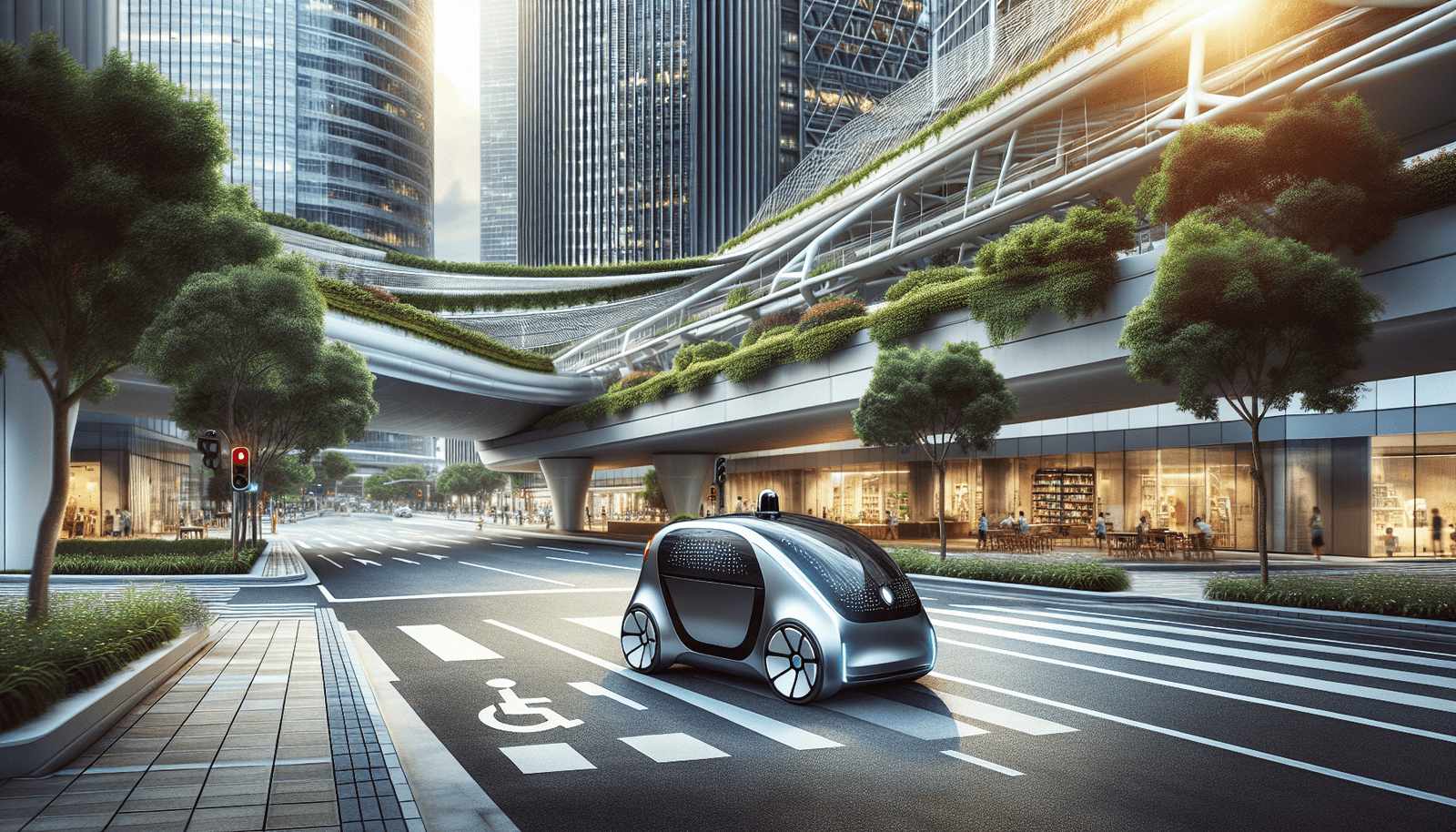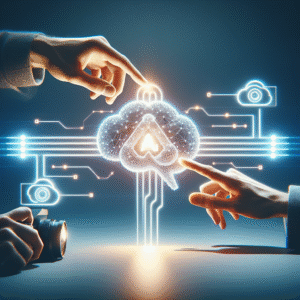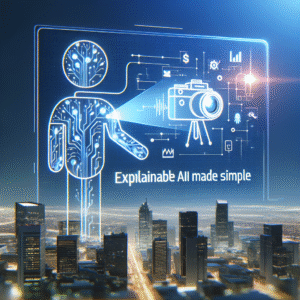Have you ever thought about what it would be like to live in a city where cars drive themselves? Just imagine sitting back and enjoying a book or listening to music while your vehicle takes you to your destination without you lifting a finger. The future of autonomous vehicles is not just a concept from science fiction; it’s a reality that’s starting to unfold in urban environments around the world. In this article, I’ll share my insights on how autonomous vehicles will reshape our cities, what challenges lie ahead, and what benefits we can expect to see.
Understanding Autonomous Vehicles
Autonomous vehicles (AVs) are designed to navigate and operate without human intervention. They use a combination of sensors, cameras, artificial intelligence, and complex algorithms to make real-time driving decisions. As I think about the technology behind AVs, I marvel at how far we’ve come in terms of innovation and what it means for our future.
Levels of Autonomy
It’s essential to understand the various levels of vehicle autonomy. The Society of Automotive Engineers (SAE) outlines six levels, from Level 0 (no automation) to Level 5 (full automation). Here’s a brief overview:
| Level | Description |
|---|---|
| 0 | No automation; human completely in control. |
| 1 | Driver assistance; some automated features like adaptive cruise control. |
| 2 | Partial automation; the vehicle can control both steering and acceleration/deceleration. |
| 3 | Conditional automation; the vehicle can manage all driving tasks but requires human intervention in specific situations. |
| 4 | High automation; the vehicle can handle all tasks in certain conditions without human intervention. |
| 5 | Full automation; the vehicle can operate independently in all environments. |
As I look at these levels, it’s clear that technology is advancing rapidly, pushing us closer to Level 5 autonomy and a future where we may not need to drive at all.
Key Technologies Behind Autonomous Vehicles
Several key technologies drive the development of autonomous vehicles:
- Sensors: Lidar, radar, and cameras gather data about the vehicle’s surroundings, helping it “see” and interpret the world.
- Artificial Intelligence: AI algorithms process the data collected from sensors, allowing the vehicle to make informed decisions quickly.
- Connectivity: Vehicles communicate with each other and with infrastructure to enhance safety and efficiency.
Benefits of Autonomous Vehicles in Urban Environments
The potential benefits of introducing AVs into our urban landscapes are tremendous. I often imagine how my daily life might change as these vehicles become commonplace.
Reduced Traffic Congestion
One of the most anticipated benefits of AVs is the potential to alleviate traffic congestion. With intelligent routing and real-time data analysis, autonomous vehicles can optimize their travel paths, reducing bottlenecks and improving overall traffic flow. In cities where I’ve experienced gridlock, this could be a game changer.
Improved Safety
Safety is a significant concern in urban environments, where a large number of accidents occur each year. Autonomous vehicles have the potential to reduce accidents caused by human error, which accounts for roughly 94% of traffic accidents. I often think about how many lives could be saved by the precise capabilities of AV technology.
Efficient Use of Space
With AVs managing traffic more effectively, we can see a transformation in how we allocate space in our cities. Parking spots may become less critical as AVs can drop passengers off and park themselves in designated areas. This could lead to more green spaces, bike lanes, and pedestrian-friendly zones, making cities more livable.
Environmental Benefits
I’m particularly excited about the environmental impact of autonomous vehicles. Many AVs are electric, and their efficient driving algorithms can help reduce emissions and improve air quality. In cities where pollution is a pressing issue, the widespread adoption of AVs could significantly lower our carbon footprint.
Challenges of Implementing Autonomous Vehicles
While the advantages are exciting, there are also challenges to consider as we integrate autonomous vehicles into urban environments. Recognizing these hurdles is crucial in paving the way for a seamless transition.
Regulatory Hurdles
The regulatory landscape for autonomous vehicles is still developing, and I often ponder how governments will create frameworks to manage their integration while ensuring public safety. Regulations governing vehicle testing, liability in accidents, and data privacy will need to be established and continually updated as technology evolves.
Public Acceptance
Accepting autonomous vehicles will require a cultural shift. Many people, including myself, might be hesitant to relinquish control of driving. Building trust through education, transparency, and positive pilot programs will be essential for gaining public support.
Infrastructure Requirements
For autonomous vehicles to operate efficiently, urban infrastructure must adapt. This may involve upgrading roads with better signage, creating dedicated lanes for AVs, and enhancing connectivity between vehicles and traffic management systems. I envision cities becoming more interconnected as technology advances.
Cybersecurity Concerns
With the connectivity of autonomous vehicles comes the risk of cyber threats. Ensuring the cybersecurity of AV systems will be a top priority, as hacking could have severe consequences for passenger safety. It’s vital for developers to stay ahead of potential risks.
The Role of Cities in Shaping AV Future
Cities play a fundamental role in shaping the future of autonomous vehicles. As I think about how urban planners can contribute, I imagine a few key strategies they might implement.
Collaborating with Tech Companies
Cities could partner with tech companies to develop and pilot AV technologies. Collaboration can lead to innovative transportation solutions that address local needs, which could be beneficial in creating custom models suited for specific urban challenges.
Smart City Initiatives
Integrating AVs into smart city initiatives presents an opportunity for synergy. Smart traffic lights, improved public transportation systems, and real-time data sharing can enhance the effectiveness of autonomous vehicles in urban areas. The more integrated our systems are, the smoother the flow of transportation will be.
Reimagining Urban Space
Urban environments can reimagine spaces to accommodate AVs effectively. This might involve transforming parking lots into parks or leisure areas, thus enhancing community space. I envision vibrant urban neighborhoods where vehicles seamlessly blend into the landscape, emphasizing pedestrian and cyclist safety.
The Future Landscape of AVs: What Can We Expect?
As I think about the future, several trends are emerging that might shape the trajectory of autonomous vehicles in urban settings.
Increased Collaboration Between Public and Private Sectors
Collaboration between public and private sectors is expected to expand, leading to shared investment in AV technologies and infrastructure. This partnership could provide more opportunities for innovation while ensuring public interests are served.
The Rise of Mobility-as-a-Service (MaaS)
The concept of Mobility-as-a-Service (MaaS) is set to redefine urban transportation. In this model, users can plan, book, and pay for various transportation services through a single platform, including autonomous vehicles, public transport, and bike-sharing. This integrated approach is appealing to me, as it simplifies the transportation experience.
Expansion of Delivery and Logistics Services
Autonomous vehicles aren’t just for passenger transport; they can also revolutionize delivery and logistics. With the rise of e-commerce, I can imagine a world where AVs are delivering packages to our doorsteps, reducing the need for multiple delivery vehicles and lessening traffic congestion.
Advances in Urban Mobility Technology
Advancements in technology are expected to lead to more sophisticated AV capabilities. From better obstacle detection to enhanced route optimization, the continuous evolution of technology will make urban transportation more efficient and safer.
Environmental Regulations Pushing Adoption
As cities strive to meet sustainability goals, regulations may encourage the adoption of electric and autonomous vehicles. I foresee local governments implementing incentives for businesses and consumers to switch to AVs, improving urban air quality and reducing congestion.
Conclusion: Looking Ahead
Reflecting on the future of autonomous vehicles in urban environments fills me with excitement and a bit of curiosity. The transition to widespread adoption will require overcoming significant challenges, but the potential benefits we can achieve are too great to ignore.
As we continue to develop this technology, it’s essential to keep an open dialogue among stakeholders, including government officials, tech developers, urban planners, and the public. Together, we can ensure that the adoption of autonomous vehicles enhances our cities, improves safety, and contributes to a sustainable future.
In thinking about the implications of AVs on my own life and my community, I believe that persistence, innovation, and adaptability will be key to designing urban spaces that meet the needs of residents while embracing the exciting possibilities that autonomous vehicles promise. I can’t wait to see what the future holds!






